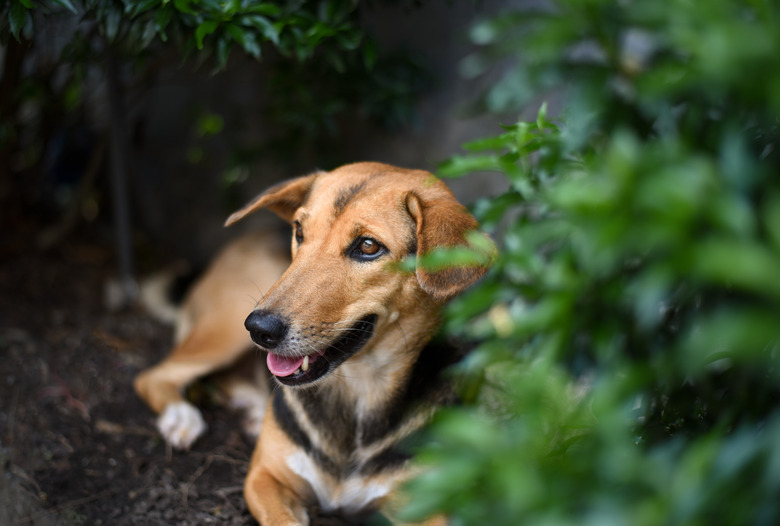Homemade Flea Spray For Lawns
We may receive a commission on purchases made from links.
Although homeowners may find a wealth of different recipes for homemade flea and tick spray for yards, there's no scientific proof that any truly work to control or kill a severe outbreak of the tiny bloodsuckers. However, taking a multiprong approach to getting rid of a flea problem goes a long way toward preventing future infestations in your yard, home, and most important, on your pet. Even though homemade flea sprays for lawns don't work and some can actually be dangerous to your pet, you do have options for more-natural, less-toxic flea treatments for yards.
Life Cycle of Fleas
Life Cycle of Fleas
The most common flea that is problematic to pets both inside and outside the home is the cat flea (Ctenocephalides felis). Adult fleas are brownish-red and 1/8 inch long with mouthparts that pierce and suck the blood of the host. The adult cat flea remains on its host where it feeds, mates, and lays its eggs. Female cat fleas can lay up to 50 eggs per day. The eggs are about 1/32 inch long, white and oval, and they fall off the pet, landing on surfaces in the environment and hatching in anywhere from two to five days.
Warm temperatures between 70 and 90 degrees Fahrenheit result in quicker flea development, and when temperatures are cooler, fully developed fleas can remain inside their cocoon for up to a year. Conditions in spring and summer are the most favorable for flea development. Adult cat fleas typically live on their host for around 40 days, but if the animal isn't groomed, female fleas can live on the host for up to 50 days.
Where to Find Outdoor Fleas
Where to Find Outdoor Fleas
Outdoor fleas are typically brought into the landscape by flea-infested wild animals journeying into the area, such as raccoons, squirrels, or even deer. Fleas typically infest outdoor areas where pets spend time resting, playing, and running, like kennels, sheltered enclosures, or dog houses.
Fleas also congregate in shady areas of the yard and avoid sunny areas since the sun dries out flea larvae and they die. Outdoor locations where fleas can reside include under decks, along fence lines, next to the home's foundation, and in overgrown, weedy areas. You can easily check suspect areas of your yard and find exact locations where fleas are residing. Wear a pair of white socks pulled up to your knees and simply walk around these areas. If fleas are present, they will jump up on the socks, and you'll see them. You'll then be able to gauge just how bad a flea infestation is in targeted areas outdoors.
Treating Fleas in the Yard
Treating Fleas in the Yard
Since fleas don't reside in sunny areas of the yard, it's not necessary to treat the entire yard if you decide to go that route. Outdoor treatment isn't necessary and isn't recommended, as the best flea control involves treating your pet and treating the inside of your home for the pest. You can install fencing to keep animals out of your yard and seal up any crawl spaces. Additionally, clean up any weedy or overgrown areas by keeping the grass mowed, cutting down weed growth, and trimming overgrown bushes.
If you feel that treating the outdoor areas for fleas is necessary, more-natural products are sprays containing permethrin, although some populations of cat fleas have become immune to the product, and it can be toxic to cats. Other products containing bifenthrin and carbaryl will also kill fleas in outdoor areas. Sprays work better than granules to kill fleas. Always follow label instructions and keep pets and children out of the area for the specified amount of time so they don't become sick.
Products like diatomaceous earth shouldn't be used on pets due to potential respiratory problems, and they don't always work when used outdoors because the product becomes ineffective when it's wet. Most botanicals don't work, whether used on pets or when treating infested areas, and products like citrus oils can be toxic to cats. In the end, the best natural flea treatment for yards is keeping them off your pet and regularly laundering pet bedding and vacuuming upholstery, carpeting, and floors.
